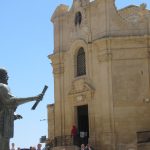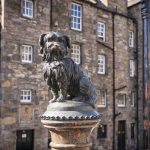There’s so much more to art in Berlin than the Top 3 Galleries from our last post. So here’s a look at an artist who has a museum dedicated to her (Käthe Kollwitz), a 20th century art movement with strong links to Berlin (Bauhaus) and the best of the rest: where to find specialist galleries, modern art and street art.
Käthe Kollwitz
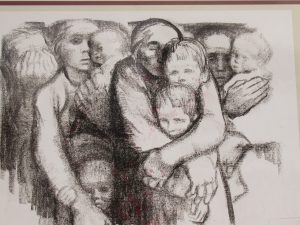
You are most likely to discover Käthe Kollwitz through the moving pieta statue at the Neue Wache – Germany’s national war memorial– which is an enlarged copy of one of her pieces. Born in 1867, Käthe Kollwitz developed a reputation for her compassionate drawings and prints, many of which portrayed the harsh lives of working people. Some took a historical angle, for example The Weavers, a major series which recorded the oppression of Silesian weavers and their failed revolt. Others were based on her own observations, such as her poster series designed for an exhibition in 1906 which portrayed the desperate conditions in which many female home-workers existed and was so hard-hitting that the empress ordered its removal before she visited the exhibition.
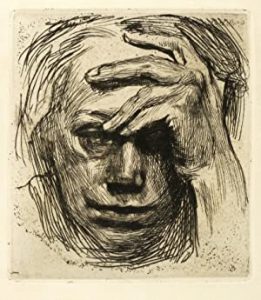
Käthe Kollwitz had a personal connection with the tragedy of war, as her son Peter was killed in action in Flanders in 1914. Her statue ‘The grieving parents’ was a memorial to him. During the 1930s she worked on a woodcut series in black and white to support the ‘Nie wieder Krieg’ movement, known in English as ‘No more war’. For this she was forced to leave her post as an art lecturer and had all her work removed from German museums. More personal tragedy was to come when her grandson Peter was killed on the Russian front in 1942. She died in 1945, having summed up the three important things as her life as ‘that I have had children, that I have had such a faithful life companion, and my work.”

Surely no-one who has seen her sculpture ‘Mother with her dead son’ will ever forget it. As one critic put it, ‘Kollwitz’s art attempted to save mankind’s image in an epoch of contempt for humanity’. The main place to find out about her is the Käthe Kollwitz Museum in Charlottenburg, where you can see many examples of her work which comprised thousands of drawings, some 300 prints and posters and about 40 sculptural works. Their website underlines her importance as ‘undoubtedly one of the most important women of the last centuries’. Her work is wide-ranging, encompassing ‘the great serious themes of life – suffering, hardship and death, hunger and war – as well as the absolutely joyful, light elements of life.’ A selection of her work can be seen here.
The Bauhaus Archive Museum

The Berlin Bauhaus Archive (due to re-open in 2025) houses the world’s largest collection of Bauhaus material: around one million objects: paintings, sculptures, photographs, models, plans, graphics, everyday objects and archives of all kinds. So it is the place to learn about this hugely influential 20th century modernist art movement.
The Bauhaus movement was a philosophy as well as an artistic movement, blurring the distinction between fine and applied arts and aiming to see creativity playing a greater role in manufacturing. The Bauhaus championed the creation of functional everyday products which were both well-designed and affordable for everyone. They were reviled by the National Socialists and in 1933 those running the Bauhaus Art School opted to close it down rather than to allow Nazi sympathisers take over. Many in the movement fled to the US, but after the war a new school was opened and the Bauhaus Archive was founded.

Here you will see a good variety of Bauhaus pieces, from furniture and ceramics to photographs of Bauhaus buildings and examples of art and textile projects. The piece ‘Fünf Figuren im Raum’ (‘Five figures in a room’) shows four people …. and a chair! ‘Konstruktion Z1 has red, blue and yellow shapes on a beige background, tea and coffee utensils are plain, simple shapes and look futuristic, although they date from the 1920s. Elsewhere in Berlin, look out for the Neue Nationalgalerie, designed by the Bauhaus architect Mies van der Rohe, where the enormous empty space on the ground floor has such huge windows that the interior and exterior spaces blur into one another. An online selection of pieces can be seen here.
More Galleries
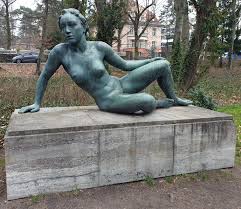
The hugely useful Visit Berlin website has a section on art-museums in Berlin with more than 60 entries! Museums recommended include the Akademie der Künste at Pariser Platz, a city centre art institution offering exhibitions, films, performances and much more, the recently opened Asian Art gallery in the Humboldt Forum, and the Brücke Museum in Dahlem, which shows ‘ground-breaking expressionist works in an idyllic location’. The Georg Kolbe Museum shows pieces by the most successful German sculptor of the early 20th century, both inside and for bigger pieces, in the garden and the nearby Georg-Kolbe-Hain Park.
Modern Art

Here too, there is a wealth of suggestions, but if you only have time for one make it the Hamburger Bahnhof, a former train-station-turned modern art museum where art with backgrounds as varied as Expressionism, Minimalism and Pop Art is shown and explained. Then there’s KINDL, the Centre for Contemporary Art, housed in a former brewery in Berlin-Neukölln, where the spacious surroundings are ideal for large installations, performances, and other art forms. There are a number of contemporary galleries on Auguststrasse, such as the KW Institute for Contemporary Art, and in the trendy Mitte / Kreruzberg area there’s the Berlinische Galerie, showcasing more modern art.
Street Art

Berlin is arguably the world capital of street art and not just because it is home to the East Side Gallery. There are many sites all over the city where street art can be enjoyed and the best advice is to use the street art section of the About Berlin App where a map highlights 18 different sites, with descriptions of each and checklists of the top 3 things to look out for. At Mauerpark for example, alongside the amphitheatre and large flea market, is the ‘Wall of Fame’ where anyone can legally spray, tag and create. Look out, says the app, especially for “The big jump” by Victor Ash, for ‘Snoopy and the balloon’ and for ‘Even heroes have bad days.’
Listen to the Podcast
Links for this Post
Käthe Kollwitz Museum
Selection of work by Kathe Kollwitz
The Bauhaus Archive Museum
Selection of work from the Bauhaus Archive Collection
More galleries
Akademie der Künste
The Asian Art Gallery at the Humboldt Forum
The Brücke Museum
The Georg Kolbe Museum
Modern art
The Hamburger Bahnhof
KINDL Centre for Contemporary Art
The KW Institute for Contemporary Art
The Berlinische Galerie
11 Berlin Walks for Art Lovers
Street art
Visit Berlin section on street art
11 Ideas for Street Art Tours in Berlin
Last Updated on November 21, 2024 by Marian Jones



